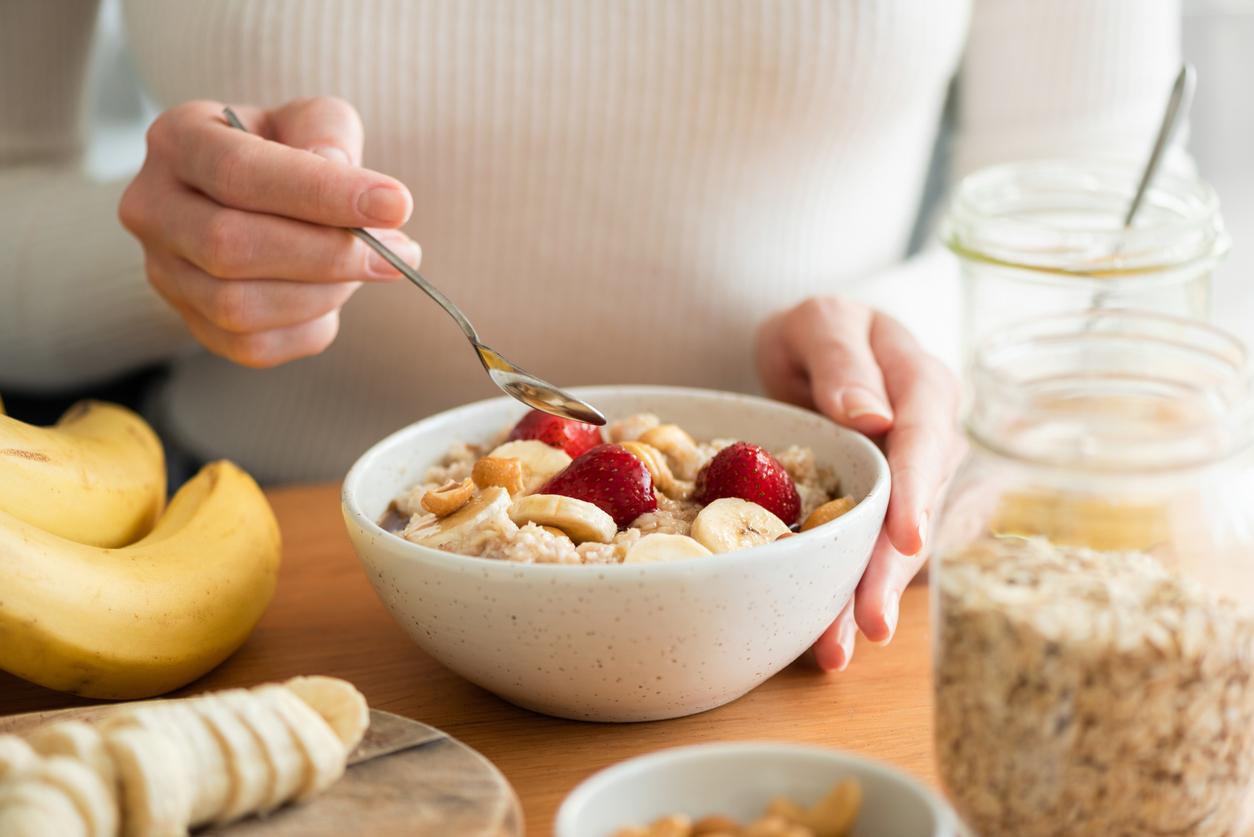
I do not tolerate lactose, but that is of course in many breakfast products, such as dairy. What is a healthy breakfast for me?
dimphy
Breakfast is also known as “the most important meal of the day”. Although this is a widespread expression, scientific research has not yet confirmed it. However, people who eat breakfast every day seem to be healthier and can concentrate better than people who regularly skip breakfast. It is therefore very good that you want to delve into breakfast a little more.
Lactose intolerance
The average Dutch person consumes a quarter of their daily dairy intake (milk and milk products) during breakfast. However, you indicate that you should eat lactose-free. Lactose is a sugar found in milk and milk products. Your intestines do not tolerate lactose well. A strict diet without milk and milk products then helps to prevent gastrointestinal complaints. Your breakfast will therefore look different from the breakfast of the average Dutch person.
It is important that you get tested for lactose intolerance, if you have not already done so. Your GP can refer you to a doctor for this. For example, some people can still tolerate small amounts of lactose. A lactose-restricted diet then helps enough to prevent gastrointestinal complaints. It may also be the case that not lactose, but other factors, are the cause of your gastrointestinal complaints. So don’t just start a lactose-free diet.
Lactose-free diet
The following products should be strictly avoided on a lactose-free diet:
- lactose
- cow, goat, sheep and donkey milk
- soft goat and sheep cheese
- buttermilk, yogurt, cottage cheese, kefir
- yogurt and fruit dairy drinks
- cream cheese, processed cheese, cheese spread, foreign cheese and fresh cheese
- custard, porridge, pudding, mousse
- whipped cream, sour cream, crème frache
- coffee milk, coffee cream
- butter, low-fat margarine, margarine
Examples of products with added lactose:
- sausage
- canned soup and sauce
- Ready-made meals
- salad dressings
- sweets, biscuits and cookies
- bread, bread substitutes, breakfast cereals, pancake mix
- spice mixtures
- medication
List of ingredients
Sometimes it is difficult to estimate whether a product is lactose-free. If one of the following ingredients is stated on the packaging of a product, the product always contains milk components (and therefore also lactose):
- lactose, milk protein, milk sugar, skimmed milk solids, dry milk solids
- milk powder, skimmed/whole milk powder, milk derivative
- curd, whey, whey powder, casein, caseinate
- butter concentrate, butter oil, butter (powder), milk fat, milk salt
- lactalbumin, lactoferrin, beta-lactoglobulin, lactoperoxidase, lactoval, recaldent, transglutaminase, nisin (E234)
For additional help, you can purchase an “Allergen-Free Branded Items List” from the Nutrition Center. This is a useful tool for finding lactose-free products.
Lactose-free breakfast
A breakfast is healthy if it consists of foods from the Wheel of Five. Examples of a healthy breakfast are:
- Wholemeal bread with healthy toppings.
- Whole grain breakfast cereals with no added sugar.
- Skimmed or semi-skimmed dairy, possibly with fruit and/or muesli.
The basis for bread (such as: wholemeal bread and brown bread) is usually: flour or flour, water, yeast and salt. In that case, bread is lactose-free. Sometimes (part of) the water is replaced by milk. Whether this also applies to your sandwich, it is best to check with your baker or point of sale just to be sure. Only spread low-fat margarine or margarine on your sandwich if it says “lactose-free” on the package. Alternatively, you can also opt for low-fat margarine or soy-based margarine.
Examples of lactose-free spreads are:
- Meat products without additives, such as: smoked meat, fricandeau, roast beef, chicken breast.
- Hard Dutch cheese, such as Gouda cheese.
- Peanut butter, possibly homemade.
- Sweet toppings, such as: honey, jam and apple syrup.
- Vegetables, such as: cucumber, radish, celery and carrot.
- Vegetable spreads, such as: pesto and hummus.
- Fish, such as homemade tuna salad.
- Avocado.
- Fruit, such as: strawberry or banana slices.
- Egg or egg salad.
You can also choose to eat whole grain breakfast cereals with dairy. Then use lactose-free milk replacements. These are also suitable for baking, for example, (oatmeal) pancakes. With some fruit, nuts and spices (such as cinnamon) you can make a tasty and filling breakfast in no time.
Examples of lactose-free milk replacements include:
- Soy milk (unsweetened).
- Lactose-free milk or yogurt.
- (Nut milk, such as: rice milk, oat milk or almond milk).
To soy milk and lactose free milk or yogurt, extra vitamins (such as vitamin B2) and calcium are often added. This makes them full-fledged milk replacers. You can opt for nut milk for a change. Of the above list, nut milk contains the least amount of protein.
A dietitian can help put together a complete lactose-free menu for the rest of the day.
Enzyme preparations
There will always be times when you have less influence on your nutritional intake. For example, think of birthdays and dinners. An additional aid is available for such moments, namely enzyme preparations. You can buy enzyme preparations at the pharmacy. These preparations contain lactase, the digestive enzyme of lactose. As a result, lactose is still broken down in the small intestine and there will be virtually no gastrointestinal complaints.
Do you also have a question? Then ask one of our experts. Always go to your doctor with urgent questions, the experts are not the right person for that. They don’t diagnose either. The other conditions can be found here.
Linda Hogervorst is a freelance dietitian and holds a master’s degree in Nutrition and Health. She owns the sole proprietorship Into Food.
















